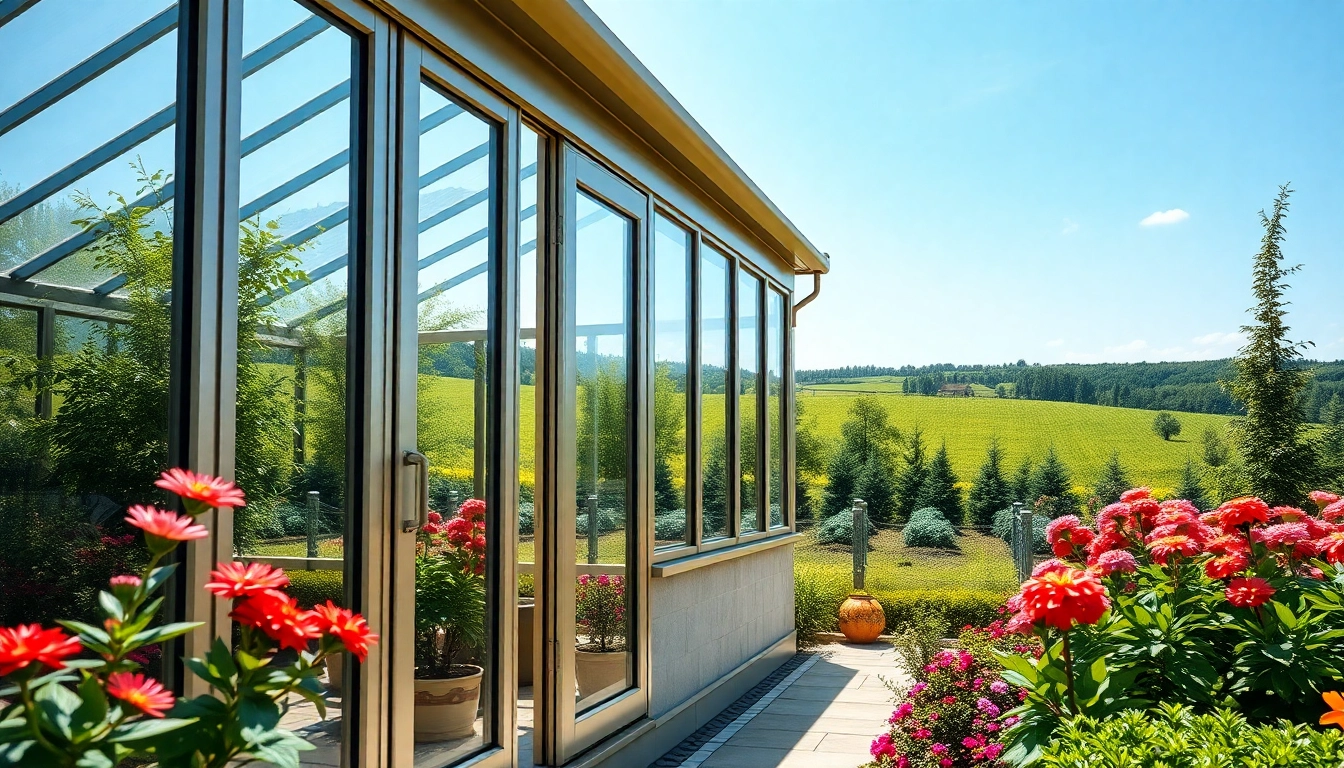Understanding Vertikale Gärten
What Are Vertikale Gärten?
Vertikale Gärten, often referred to as vertical gardens or living walls, serve as innovative solutions that allow for the cultivation of plants in vertical spaces. This method of gardening transcends traditional horizontal bed layouts, offering a creative way to integrate greenery into urban environments with limited space. By using various techniques such as hydroponic systems or repurposed materials, vertical gardens enable plants to thrive against walls, fences, or specially-designed structures. This approach not only enhances aesthetic appeal but also contributes significantly to air quality, biodiversity, and urban heat mitigation.
Benefits of Vertical Gardening
- Space Saving: Vertical gardens maximize limited spaces, making them ideal for urban settings. Whether on balconies, terraces, or even indoors, these green walls transform any small patch of land into a lush oasis.
- Improved Air Quality: Plants naturally filter air pollutants and carbon dioxide, releasing oxygen and improving overall air quality. This is particularly beneficial in densely populated urban areas where air pollution is a concern.
- Temperature Regulation: Vertical gardens can help regulate temperatures in buildings. By providing natural insulation, they reduce the need for air conditioning in warmer months and help maintain warmth in the winter.
- Noise Reduction: The layers of plants can absorb sound, reducing noise pollution in urban environments—a notable benefit for high-traffic areas.
- Improved Mental Health: Studies have shown that green spaces can enhance mental well-being. A vertical garden can provide a sense of tranquility and connection to nature.
- Aesthetic Appeal: Aesthetically, vertical gardens contribute to the beautification of spaces, enhancing the architecture and providing a vivid contrast to concrete structures.
Common Misconceptions
There are several misconceptions regarding vertical gardening that can deter potential enthusiasts. One common myth is that vertical gardens require excessive maintenance. While they do require care, many modern systems are designed to be low-maintenance with automatic irrigation features and resilient plant choices. Another misconception is that vertical gardens can only be planted with specific types of plants; in reality, a variety of species can thrive in vertical gardens depending on the setup and environment. Understanding these points can empower more individuals to explore vertical gardening without undue worries.
Designing Your Vertical Garden
Choosing the Right Location
Location is one of the most critical factors in the success of a vertical garden. Look for spaces that receive adequate sunlight—typically, most flowering plants prefer six to eight hours of sunlight daily. Assess the environmental conditions, such as wind exposure and drainage, to identify suitable areas that can sustain the proposed garden. South-facing walls are often ideal in northern climates, while shaded areas may better suit tropical plants.
Understanding Plant Selection for Vertikale Gärten
Choosing the right plants for a vertical garden is essential to ensure good growth and resilience. Consider a mix of foliage plants, flowering plants, and herbs or vegetables, depending on your desired maintenance level and aesthetic results. For instance, vertikale Gärten may benefit from fast-growing climbers like ivy or climbing roses, while herbs such as basil or mint can provide both utility and visual interest. Take into account plant compatibility—some plant species thrive in moist environments, while others prefer drier conditions.
Essential Tools and Materials
Creating a vertical garden requires some specific tools and materials. Basic tools include a shovel, trowel, gardening gloves, and a watering can or hose with a spray attachment. The materials often consist of a framework or structure that will support plants—this could range from commercial vertical garden kits to DIY solutions using pallets or recycled materials. Consider also installing an irrigation system, especially for larger setups, as it can significantly reduce maintenance time.
Techniques for Vertical Planting
Hydroponic systems allow plants to grow in a nutrient-rich water solution without soil, which is ideal for vertical gardening due to their compact design and efficiency. This technique reduces the risk of pest infestations associated with soil, and it can promote faster growth rates in many plant species. Hydroponics also allows for better control over water and nutrient delivery, essential for maintaining healthy plants in vertical setups.
Wall-Mounted vs. Free-Standing Solutions
Wall-mounted vertical gardens are typically attached to a wall or fence, offering a flush and integrated look with the surrounding environment. These systems can be compact and are often more about aesthetics. On the other hand, free-standing vertical gardens, such as trellises or plant towers, provide flexibility in becoming a central feature of a garden or a patio. Each approach has its benefits, and the choice often depends on available space, desired aesthetic, and maintenance preferences.
Tips for Plant Care in Vertical Spaces
Maintaining a vertical garden requires strategic care practices. Regular watering is crucial, especially in the height of summer when plants may become parched. Fertilize periodically with an appropriate liquid fertilizer to boost growth. Additionally, periodic inspections to trim dead leaves and check for pests will help maintain the health and appearance of your garden. It’s also beneficial to rotate plant placements occasionally to prevent uneven growth and ensure all areas receive adequate light.
Inspiring Examples of Vertical Gardens
Urban Applications of Vertikale Gärten
Many cities around the globe have embraced the concept of vertical gardens as part of their architectural landscape. Examples include the CaixaForum building in Madrid, known for its stunning green wall that contributes to urban biodiversity, and the iconic Bosco Verticale in Milan, which integrates residential living with vertical gardens. These examples show how vertikale Gärten can mitigate urban heat zones, filter air, and contribute to overall urban aesthetics, inspiring residents and visitors alike.
Home Projects and DIY Ideas
For homeowners, vertical gardens present an opportunity for creative expression and sustainability. DIY vertical garden projects can be simplified using recycled pallets, wooden frames, or even plastic bottles. One popular DIY method involves creating a vertical plant pocket using felt planters attached to a framework. This type of project allows for the growth of a variety of herbs and compact blooms, serving practical and decorative purposes.
Commercial Displays and Public Installations
Commercial entities have leveraged vertical gardens not only for aesthetic benefits but also for market differentiation. Retail spaces, hotels, and offices are incorporating vertical gardens as features that enhance customer experience. The Green Wall at the Musée du Quai Branly in Paris offers a vibrant entrance, while local businesses might use vertical gardening to beautify outdoor dining areas. These installations offer benefits such as lowering corporate stress levels and improving air quality while inviting customers into natural, pleasant environments.
The Future of Vertical Gardening
Trends in Vertikale Gärten Design
The future of vertical gardening is poised for remarkable growth as urban areas continue to expand and the need for green spaces intensifies. Trends suggest evolving design concepts that incorporate technology like smart irrigation systems, which automatically adjust water applications based on weather data. Additionally, vertical gardening is increasingly being tied to edible landscapes, encouraging individuals to grow their own food, thus merging beauty with utility.
Technological Innovations for Improved Growth
Technological advancements are reshaping how vertical gardens function. Innovations in irrigation technology, like drip and subsurface irrigation, help manage water use effectively, while advancements in plant growth monitoring gadgets provide real-time analytics regarding plant health and environmental factors. Moreover, as urban farming gains momentum, vertical gardens are becoming integral in local food systems, proving their role not only in beautification but also sustainability.
Environmental Benefits and Sustainability
Vertical gardens play a pivotal role in promoting sustainable practices within urban ecosystems. They help combat urban heat island effects by providing shade and improving air quality with their capacity to absorb CO2 and particulates. Moreover, vertical gardens are efficient in rainwater harvesting—an important aspect in cities facing water scarcity issues. By adopting vertical gardening techniques, individuals and communities can contribute to building more resilient urban environments.


